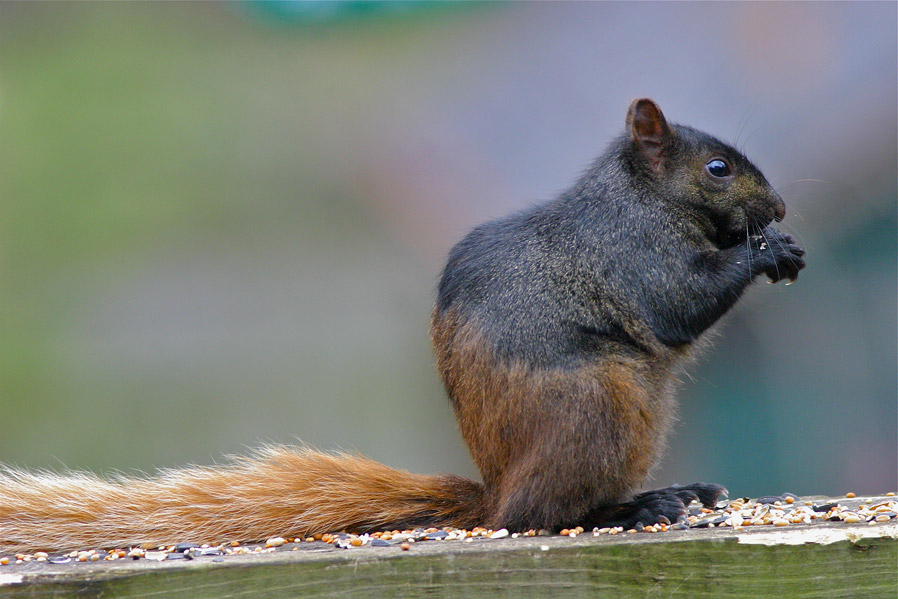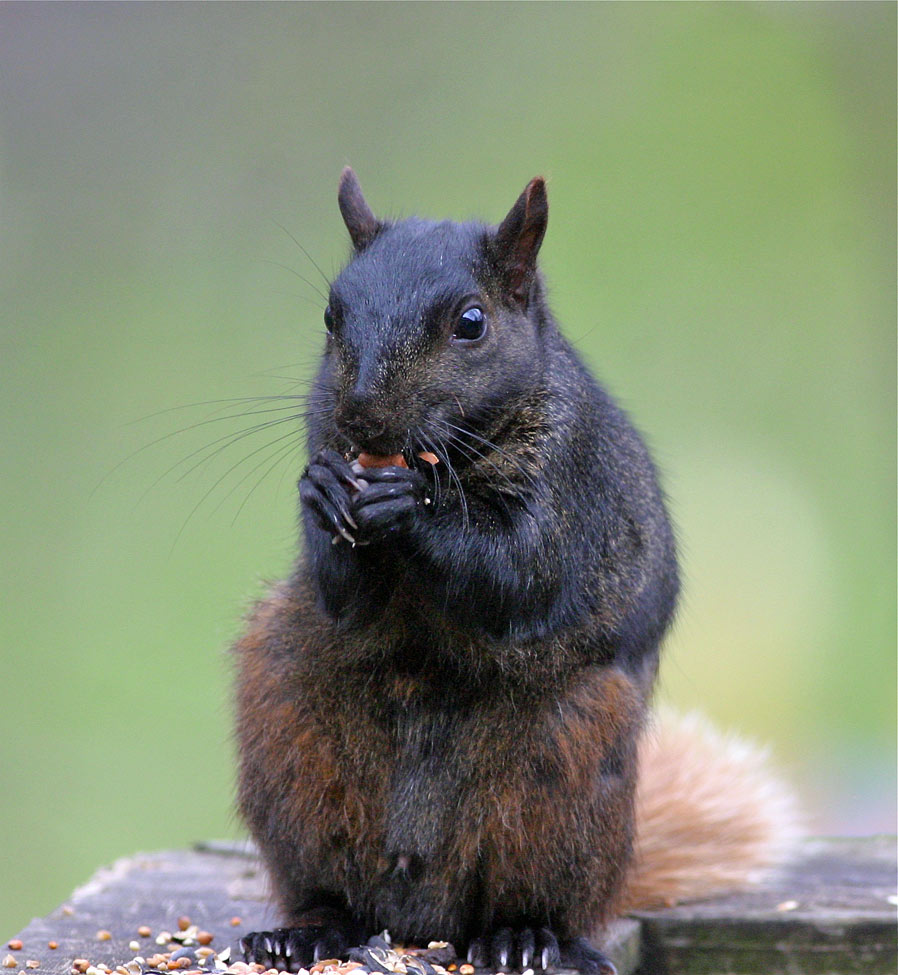An eastern grey squirrel, Sciura carolinensis, displays an intriguing two-tone fur pattern. Could he be moulting? © BCP 2011
Hey! Didn’t this guy get the message? Eastern grey squirrels, Sciuris carolinensis, are supposed to be, um, grey?
Mr. Big Redtail enjoys a treat in my backyard yesterday. (At least I think he’s a mister.) © BCP 2011
Well, actually, there is a black morph, known by biologists as the “melanistic form,” which comes from the Greek root melanin, meaning black. Large natural populations of the melanistic form of the grey squirrel are found in Ontario and Quebec.
Here’s what wiki has to say about black squirrels:
“As a melanistic variety of the Eastern Gray Squirrel individual black squirrels can exist wherever grey squirrels live. Grey mating pairs may produce black offspring, and in areas with high concentrations of black squirrels, mixed litters are common.[1] The black subgroup seems to have been dominant throughout North America prior to the arrival of Europeans in the 16th century, since their dark colour helped them hide in virgin forests which tended to be very dense and shaded. As time passed, hunting and deforestation led to biological advantages for grey coloured individuals.[2] Today, the black subgroup is particularly abundant in the northern part of the Eastern Grey Squirrel’s range.[3][4] This is likely due to the significantly increased cold tolerance of black individuals which lose less heat than greys.[5] Black individuals also enjoy concealment advantages in denser northern forests.[1]
I didn’t check all wiki’s references, so I don’t know how strong the evidence is for the above theories. They’re interesting, though.
Now what about my two-toned squirrel? A little digging on the Internet, my partner in research, and I found that sightings of these colourful creatures occasion quite emotional reactions. Some people call them “Copper Tails” and others call them “Brown Backs.”
I don’t know the explanation for the distinctive tail colouration in individuals. I’d love to hear if anybody knows.
© BCP 2011





3 comments